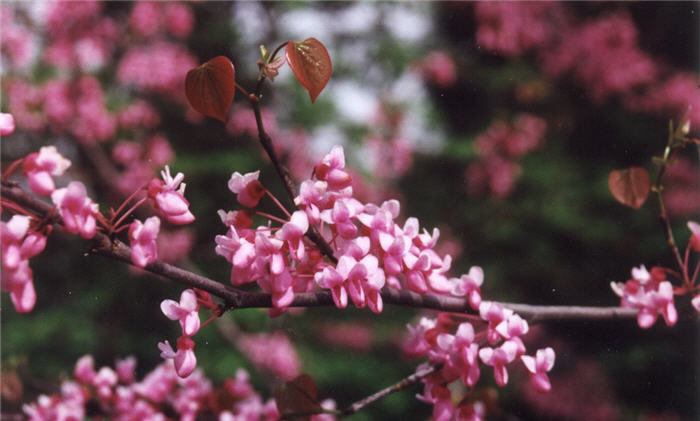| Botanical Name: Cercis canadensis | |
| Common Name: Eastern Redbud |

-
Anatomy
-
Culture
-
Design
Plant Type
Tree, Shrub
Height Range
12-25'
Flower Color
Pink, Red, Violet
Flower Season
Spring
Leaf Color
Green
Bark Color
Brown, Grey
Fruit Color
Green
Fruit Season
Summer, Fall
Sun
Full, Half, Shade
Water
High
Growth Rate
Moderate, Slow
Soil Type
Clay, Loam
Soil Condition
Average, Rich, Poor, Well-drained, Moist
Soil pH
Acid, Neutral
Adverse Factors
n/a
Design Styles
English Cottage, Formal, Japanese, Meadow, Spanish, Woodland
Accenting Features
Multi-trunk Tree, Showy Flowers, Silhouette, Specimen
Seasonal Interest
Spring, Summer
Location Uses
Entry, Shrub Border, Foundation, Lawn, Patio, Park
Special Uses
Screen, Shade Tree, Small Spaces
Attracts Wildlife
n/a
Information by: Stephanie Duer
Photographer: Steve Mullany
Photographer: Steve Mullany
-
Description
-
Notes
This small, deciduous tree with a rounded head is covered with small pea-shaped flowers of a rose pink to violet color in the spring before the appearance of large, heart-shaped leaves. It can grow to 25' tall with an equal spread. It has a low branching habit with a rounded form. During fall, foliage turns yellow. This is a great patio tree or for a small yard. "Forest Pansy" is a popular variety with spring leaves that emerge purplish and turn to a darker maroon.
Plant in rich, well-drained soil. Not suitable for sandy soils. Will grow in sun to light shade; watering recommendation is for full sun. See guides for planting instructions. Some forms will have pea-like seed pods after flowering, providing winter interest.